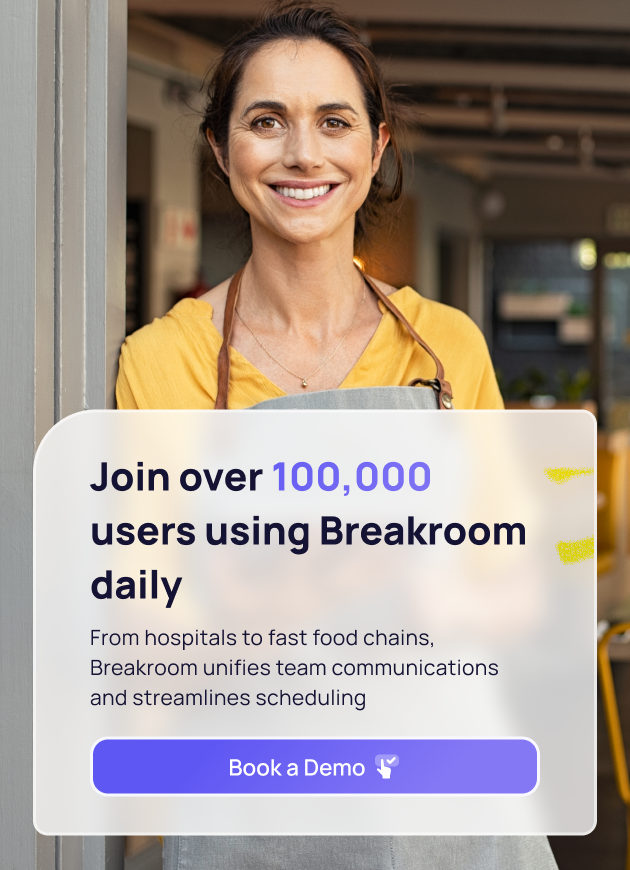You know that Sunday night feeling. You're staring at a blank schedule template, trying to figure out how to cover next week's shifts with three people calling out sick, two servers giving their notice, and restaurant recruiters telling you the talent pool is drying up. Sound familiar?
Restaurant scheduling doesn't have to feel like solving a Rubik's cube blindfolded. A lot of good scheduling comes down to having a solid plan.
The Real Cost of Bad Scheduling
Before we dive into solutions, let's talk numbers. Poor scheduling can kill your margins faster than a bad Yelp review. When you're overstaffed, labor costs eat into profits. When you're understaffed, service suffers, customers leave unhappy, and your remaining restaurant staff burns out from the extra load.
Method 1: The Data-Driven Approach
Stop guessing. Start measuring.
Your POS system holds goldmine data about customer patterns. Monday lunch might need two servers, but Friday dinner could require six. Track your sales by hour, day, and season. Most restaurant managers are shocked to discover their "busy" periods don't always align with reality.
Create a simple spreadsheet tracking sales per labor hour. If you're hitting $40-60 in sales per labor hour during peak times, you're in the sweet spot. Below $30? You're likely overstaffed. Above $80? Your team is probably drowning.
Method 2: Cross-Training for Flexibility
Here's where most restaurants miss the boat. Having servers who can run food, hosts who can bus tables, and kitchen staff who can prep makes scheduling infinitely easier. When someone calls out (and they will), you're not scrambling to find coverage.
Cross-training also helps with restaurant staffing during the labor shortage. Instead of needing specialists for every position, you can build a versatile team that adapts to demand.
Method 3: The Two-Week Rolling Forecast
Reactive scheduling leads to chaos. Proactive scheduling leads to profit.
Build schedules two weeks out, but review daily. Monday's schedule should already account for Tuesday's weather forecast, upcoming events, and historical patterns. This gives your restaurant staff time to plan their lives (happy employees stay longer) and gives you flexibility to adjust.
Method 4: Technology That Actually Helps
Remember when scheduling meant whiteboards and prayer? Modern scheduling software can predict labor needs, handle time-off requests, and even send shift reminders. But here's the catch: the tool is only as good as the data you feed it.
Look for platforms that integrate with your POS system and offer mobile apps. Your staff should be able to swap shifts, request time off, and check schedules from their phones. Less back-and-forth means more time for actual management.
And don’t sleep on AI! A complex list of employees, open shifts, and preferences can be digested by AI in seconds, letting you spend more time out of the office and working with your people directly.
Method 5: Strategic Understaffing (Yes, Really)
This sounds counterintuitive, but hear me out. Slight understaffing might actually improve service and team morale if it is done right. A busy team often provides better service than a bored one. Customers feel the energy difference.
The key is "slight." You want your team moving efficiently, not running around like headless chickens. Monitor customer wait times and table turns closely. And have a backup plan. If these metrics start slipping, add staff (see Method 2 above).
Dealing with the Restaurant Labor Shortage Reality
The current labor market isn't going back to 2019 levels anytime soon. Successful restaurant operators are adapting by:
- Offering flexible scheduling as a benefit
- Creating multiple part-time positions instead of demanding full-time availability
- Building relationships with restaurant recruiters for consistent talent pipelines
- Implementing retention bonuses for consistent attendance
Peak Time Mastery
Every restaurant has rush periods that make or break the day. The difference between smooth service and chaos often comes down to having the right people in the right positions at the right time.
Pre-shift meetings become crucial during peak times. Your team should know who's covering which sections, who's running food, and who's handling special requests before the first customer walks in.
The Schedule That Sells Itself
Good schedules reduce turnover because they respect your team's life outside work. Posting schedules at least one week in advance (two is better) shows respect for your restaurant staff's time. Consistent scheduling for reliable employees builds loyalty.
When employees can predict their income and plan their lives, they're less likely to jump ship when restaurant recruiters come calling.
Making It Stick
Optimization isn't a one-time fix. It's an ongoing process of measurement, adjustment, and refinement. Track your labor percentage weekly, monitor customer satisfaction scores, and ask your team for feedback.
The restaurants thriving despite the labor shortage aren't necessarily paying the highest wages (though competitive pay helps). They're the ones making scheduling work for both the business and the people who power it.
Restaurant scheduling will never be perfect, but it can be strategic. When your team knows what to expect and you're using data to guide decisions, that Sunday night schedule panic becomes a thing of the past.
Frequently Asked Questions
Q: How do I handle scheduling conflicts with federal and state labor laws, especially regarding split shifts and overtime regulations?
A: Split shift regulations vary by state, with some requiring additional compensation for shifts separated by more than one hour. Always consult your state's labor department guidelines and consider using scheduling software that flags potential violations. For overtime, track weekly hours in real-time rather than waiting until payday to discover violations.
Q: What's the best way to manage seasonal staffing fluctuations without constantly hiring and firing?
A: Build a core team of year-round employees supplemented by seasonal workers. Maintain relationships with reliable seasonal staff from previous years and offer them first priority for returning positions. Consider partnerships with local culinary schools or temporary staffing agencies for predictable seasonal support.
Q: How should restaurant scheduling integrate with inventory management and prep work assignments?
A: Align prep schedules with delivery days and weekend rushes. Schedule your strongest prep cooks for high-volume prep days, and ensure opening shifts include staff capable of handling both service and finishing prep work. Use historical sales data to predict prep needs and schedule accordingly.
Q: What metrics should I track to measure the success of my scheduling optimization efforts?
A: Monitor labor cost percentage, sales per labor hour, employee turnover rate, customer wait times, and table turn rates. Track time-off requests and last-minute callouts as indicators of schedule satisfaction. Compare these metrics month-over-month and against industry benchmarks for your restaurant type.
Q: How do I handle scheduling when working with unionized restaurant staff or dealing with collective bargaining agreements?
A: Union contracts often specify minimum hours, seniority-based scheduling preferences, and advance notice requirements. Review your collective bargaining agreement thoroughly and build these constraints into your scheduling process. Consider involving union representatives in scheduling policy discussions to ensure compliance and buy-in.








